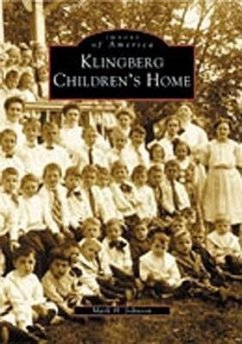Serving as the pastor of a small Swedish congregation in New Britain, Rev. John Eric Klingberg never forgot his own childhood misery. His past inspired a lifelong mission: to provide a home for destitute and forgotten children. In May 1903, Klingberg found three small boys who had been abandoned in a shack and welcomed them into a new home, the first Klingberg Children's Home. After years of prayer and gracious donations from friends and strangers alike, Klingberg gradually acquired the parcel of land overlooking the city of New Britain and built the home that would house more than two thousand boys and girls over the years. The images in Klingberg Children's Home come from the extensive collections of the Klingberg Family Centers. They tell the captivating story of Klingberg's journey in faith as he developed the orphanage. This collection includes photographs of Klingberg's birthplace in Sweden; photographs of the first orphans taken in by Klingberg in 1903; images of the orphanage on the hilltop and the ten orphan houses occupied during the early years; and scenes of the children's everyday life.








